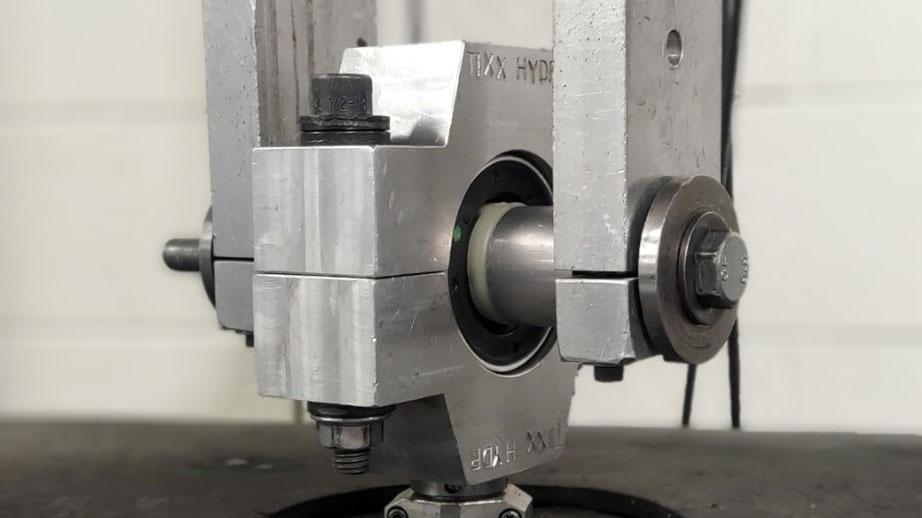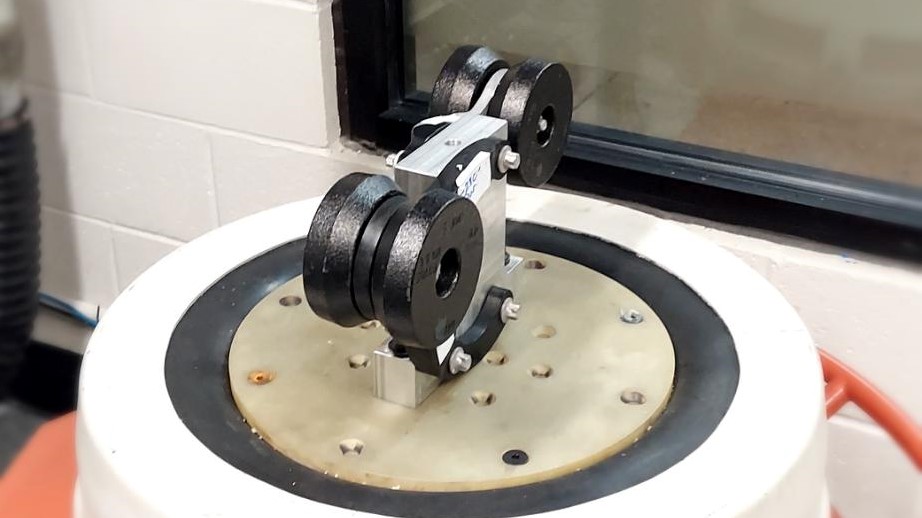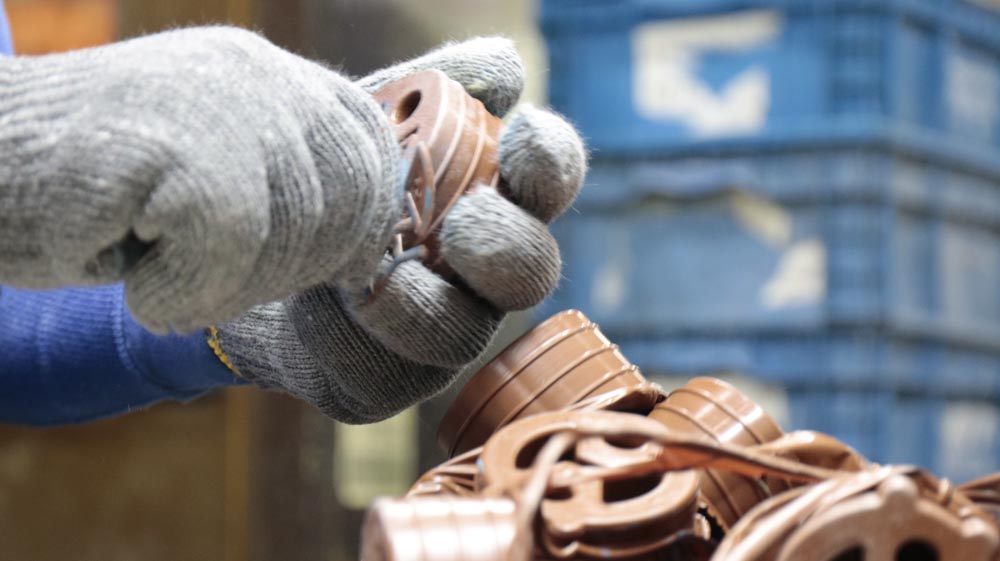Table of Contents
Rubber has long been a staple in a wide variety of essential automotive parts.
As such, it’s safe to say that without rubber, the more than 300 million registered vehicles in the United States and Canada simply wouldn’t work.
Obvious automotive applications that come to mind are the rubber tires that grip our roads, the rubber wiper blades that clear our windshields, and the rubber belts that power our engines.
Rubber is still in high demand as electric vehicles (EVs) continue to influence the industry, and rubber manufacturers like AirBoss can help EV automakers source the components they need.
Let’s pop the hood on an electric vehicle to better understand how rubber can improve EVs in ways that might surprise you.


Electric Vehicles Need Rubber to Run
A common misconception about EVs is that they require fewer rubber components than traditional gasoline-powered automobiles. This may be true in some use cases—when we consider the inner workings of a combustion engine versus a battery-powered engine—but many components and their applications are almost identical.
In fact, the rise in electric vehicle popularity these last few years, and their reliance on rubber for all kinds of components, has actually led to a greater demand for rubber around the world.
Common rubber components used in both gas-powered vehicles and electric vehicles include:
- Suspension mounts: Believe it or not, EVs are often heavier than their gas-powered counterparts because of the weight of their batteries. This puts extra strain on the suspension, which taxes the suspension mounts more. EVs still need suspension mounts that perform like those on gas-powered vehicles, but EV suspension mounts need to be optimized for more weight and more wear and tear.
- Bushings: Rubber bushings provide a bearing surface in many different places around the vehicle to reduce friction, vibration, and noise caused by operation. Bushings of different shapes, sizes, and tolerances are used throughout both gas-powered and electric vehicles.
- Gaskets: EVs might not use gasoline, but they do still utilize different oils and lubricants for things like brakes, bearings, and suspension. Rubber gaskets, created with various rubber compounds, are optimized to withstand exposure to oils and chemicals.
- Wiper blades: Synthetic rubbers like silicone are used in windshield wiper blades, regardless of whether a vehicle is gas-powered or electric.
- Tires: Companies have tried to redesign the rubber tire here and there, but rubber is still the most reliable material for tread durability and air pressure retention.
- And more: Everything from the mats on the floor of your vehicle to the grommets and belts around the engine are made of rubber in both gas-powered and electric vehicles.
Rubber Applications Unique to Electric Vehicles
Rubber components under the hood may differ between gas-powered vehicles and EVs, but that’s understandable. Things like rubber rings, gaskets, and hoses designed to seal in and help transport gasoline through a gas-powered vehicle simply aren’t necessary in electric vehicles.
Even so, EVs present unique challenges. Rubber is exceptionally positioned to solve these, and manufacturers like AirBoss are primed to provide that rubber.
Rubber applications unique to electric vehicles include but are not limited to:
- Improved battery safety components: Greater precautions are required for battery safety in electric vehicles, and more refined and optimized rubber compounds are utilized in EV engines to ensure battery safety.
- Increased temperature stability: Electric vehicles may not operate at higher temperatures than gas-powered vehicles, but the electrical components in EVs need to have a higher temperature stability to guarantee that surges or high-heat scenarios don’t damage important EV components.
- Improved powertrain mounts: Both EVs and their gas-powered counterparts require rubber powertrain mounts, but gas-powered vehicles often have theirs out of balance, which causes higher vibration frequencies. EVs need better powertrain mounts to counterbalance the torque caused by electric motors and to minimize the different vibrations that EVs create.
- Optimized vehicle closure stops and travel limiters: Electricity is everything in an EV, and metal-to-metal contact as well as electric shock is prevented with optimized rubber bobbins to “soft” close things like car doors or tailgates. These are even more important for electric vehicles.
Material scientists at AirBoss are striving to create custom rubber compounds in partnership with leading electric vehicle automakers to refine rubber components for greater EV impact. The above-listed improvements are only scratching the surface of how rubber can be used in EVs.

Solving Electric Vehicles Rubber Challenges
Making components for electric vehicles is only one part of AirBoss’s rubber manufacturing portfolio, but it’s becoming a more important aspect of business as EVs continue to make waves. The future is bright for both electric vehicle automakers and the suppliers, manufacturers, and raw material producers that contribute to electric vehicle optimization.
Working within the EV industry is a way for AirBoss to not only help shape industry standards but to also support local and global economies where the EV market is emerging. That’s why we’re eager to bring actionable solutions to the forefront when our electric-vehicle clients come calling with unique rubber challenges.
The Future of Rapid Prototyping at AirBoss
For now, AirBoss is comfortable being the tip of the spear, so to speak, when it comes to process innovation. This takes the shape of rapid prototyping, 3D printing, and automation for both our research and development lab and the manufacturing floor.
Going forward AirBoss intends to continue looking for technology, tactics, and out-of-the-box rubber applications that can improve efficiency while reducing resource waste. For AirBoss’s Mark Nordhaus, improvements on the horizon are as simple-but-impactful as adding new printers to the mix—ones that can utilize more materials for even greater prototyping capabilities.
“We’re looking into using some tougher plastics. We want to 3D print a part that will be just like a production plastic part,” he says. “3D printing is still evolving as a fairly new technology. We’re trying to use the most advanced technology that’s out there, the newest materials, the newest machines, so that we’re keep right at the cutting edge of prototyping.”



